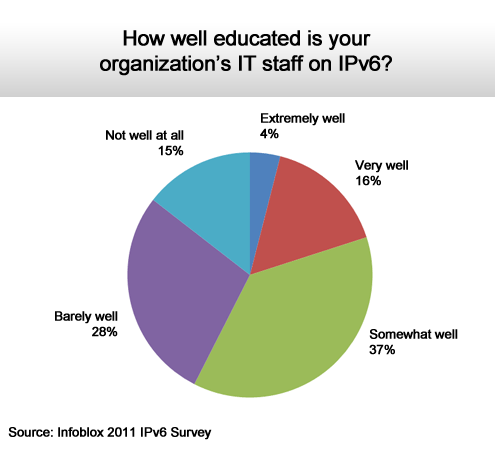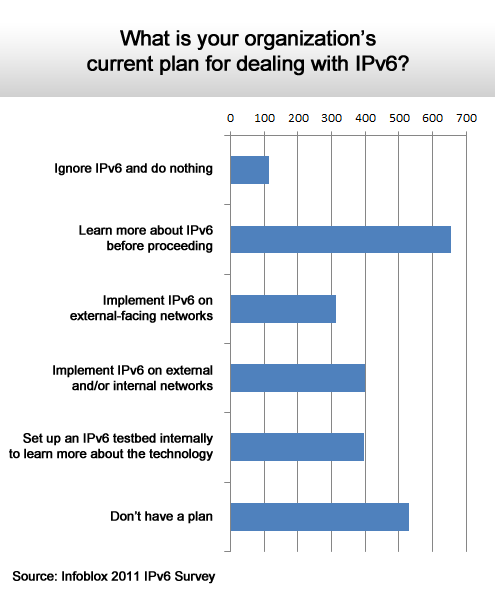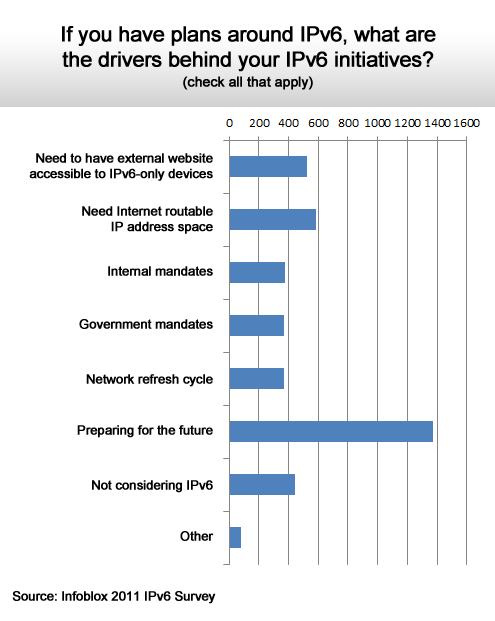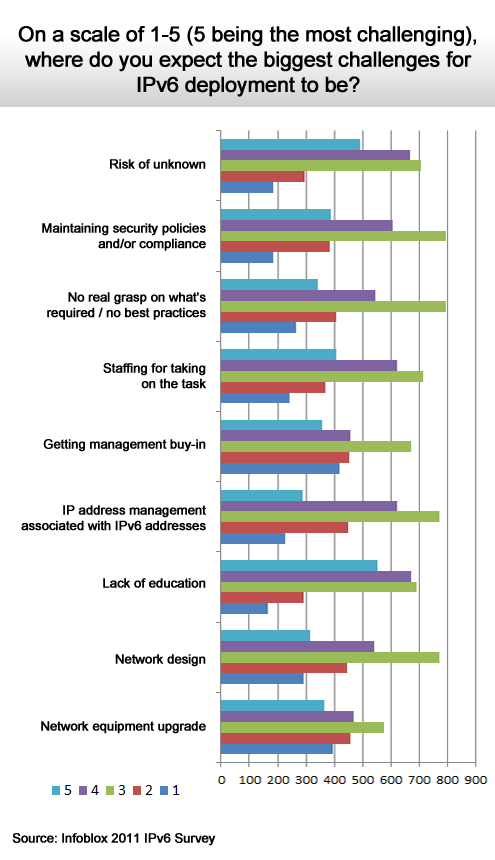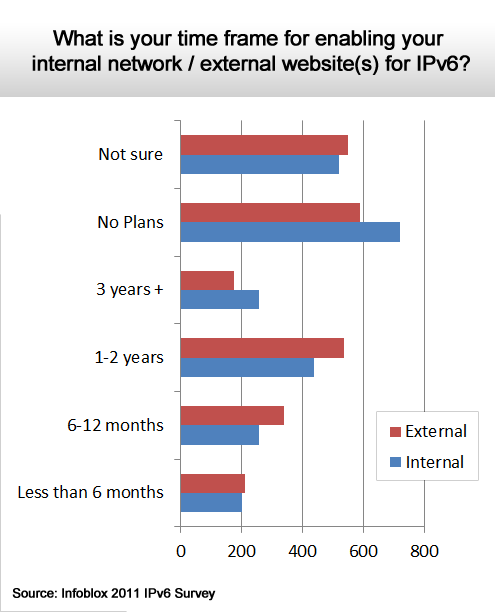
But a new survey of 2,400 IT people conducted by Infoblox, a provider of network management and automation tools, finds that while awareness of IPv6 issues has risen, the majority of IT organizations in the U.S. are not ready to upgrade.
While it’s true that we’re running out of IPv4 addresses, most companies can work around that issue on their internal networks. Where IPv6 support will become an issue is in federal government websites that have been mandated to support IPv6 and on external facing websites that need to interact with consumers from areas such as Asia where the move to IPv6 is expected to be fastest, says Cricket Liu, Infoblox vice president of architecture. Driving that switchover, says Liu, is the simple fact that Asian countries have already run out of IPv4 addresses, so the shift to IPv6 is already starting to happen.
While every organization will eventually make this shift, at the front of the line will be large-scale Web service providers such as Google and Facebook and any company that operates globally. To help companies make this transition, the folks at CompTIA, an association that promotes the interests of IT services firms, has released a white paper that outlines a series of best practices for making this transition.
According to Seth Robinson, director of research for CompTIA, the biggest challenge many customers will have is supporting IPv6 and IPv4 alongside each other for years to come because of the latency issues that this will introduce to their network environments.
But for all the hype surrounding IPv6, Adam Powers, CTO of Lancope, a provider of network monitoring tools, recommends that customers should take an evolutionary approach to migration. There’s still plenty of time to put a strategy in place. In the meantime, Powers says that unless customers have a specific immediate requirement, they should be wary of vendor pressure to upgrade their networks immediately just for the sake of attaining IPv6 compatibility.
Click through for results from an IPv6 survey conducted by Infoblox.
More automation than one might think.
Most are low to middle of the scale.
Everyone is equally unprepared.
A lack of action speaks volumes.
Much room for improvement.
Some progress is being made.
It’s the right thing to do.
Most are thinking about it.
Money and skills top the list.
Taking the long view.
Longer still.
At least they know where to start.







